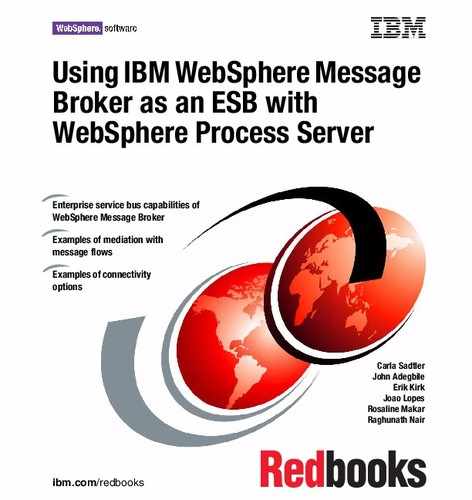
182 Using IBM WebSphere Message Broker as an ESB with WebSphere Process Server
After we finish these steps, we restart the WebSphere Process Server
application server. The JSSE repertoire is now configured to use the keystore
and truststore on secure server/client connections.
The second part of the security configuration is the client properties that must be
defined to the run time. The WS-I client configuration is implemented using J2EE
and can be changed by using the Java virtual machine (JVM™) environment
entries by using the -D flag or directly editing the System.setProperty method.
We must set the properties shown in Table 7-1 before the HTTPS request.
Table 7-1 SSL property elements
We must set these flags before the business flow can use the interfaces on the
import components. You will see this done in the business process with a Java
Snippet activity later in “ConfigSSLEnvironment Java Snippet activity” on
page 191.
7.4 WebSphere MQ configuration
To run this scenario, a queue manager for the configuration manager and runtime
broker must be defined inside the WebSphere MQ. The following queues must
also be created in order to run this scenario (see Example 7-8 on page 183):
? DEFINE QLOCAL(‘SC3Q.INPUT’)
Queue used by the VerifyCredit flow.
? DEFINE QLOCAL(‘SC3Q.INPUT.LEGACY_1’)
Queue used for sending messages to Legacy 1.
? DEFINE QLOCAL(‘SC3Q.INPUT.LEGACY_2’)
Queue used for sending messages to Legacy 2.
? DEFINE QLOCAL(‘SC3Q.OUTPUT.ERR’)
Error queue used to store exceptions that occurred during the flow execution.
Property name Property value
javax.net.ssl.trustStore The complete file path of the truststore
javax.net.ssl.trustStorePassword The password of the truststore
javax.net.ssl.keyStore The complete file path of the keystore
javax.net.ssl.keyStorePassword The password of the keystore
..................Content has been hidden....................
You can't read the all page of ebook, please click here login for view all page.
